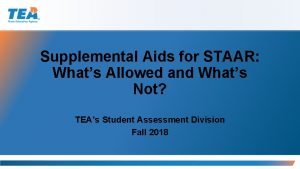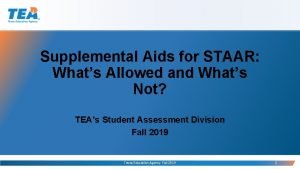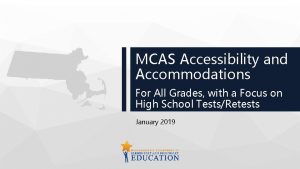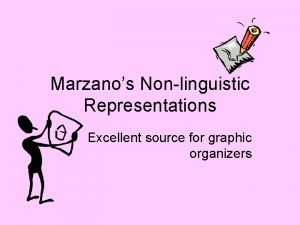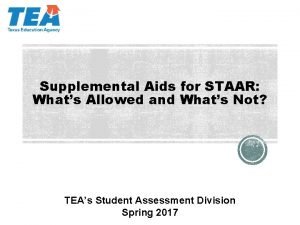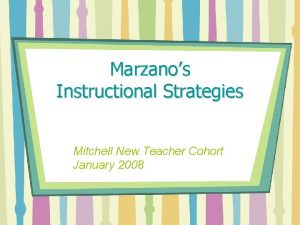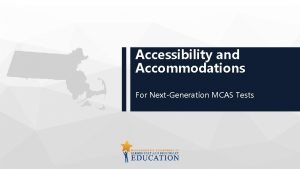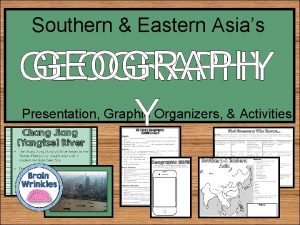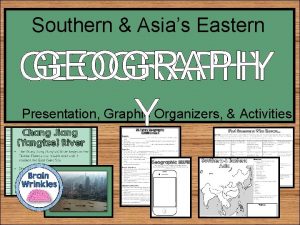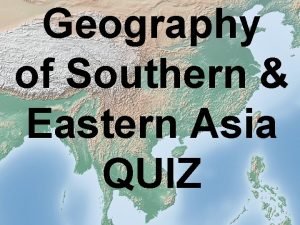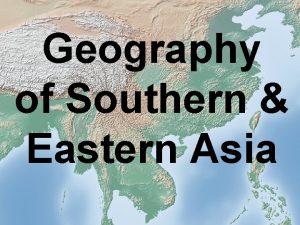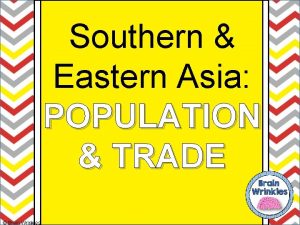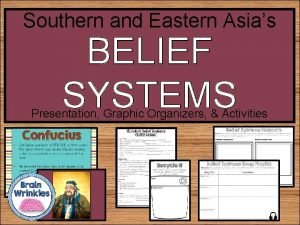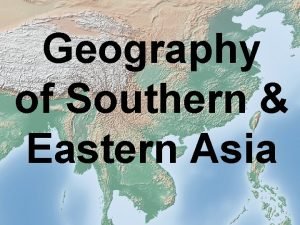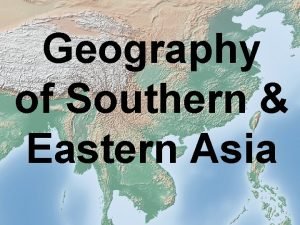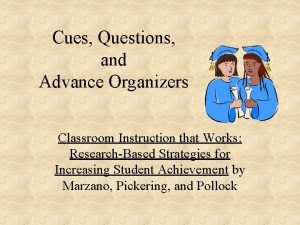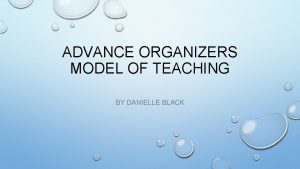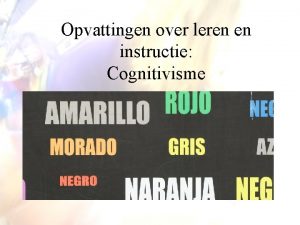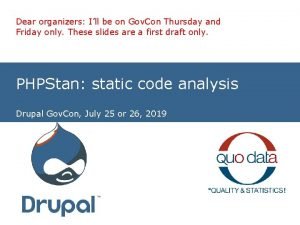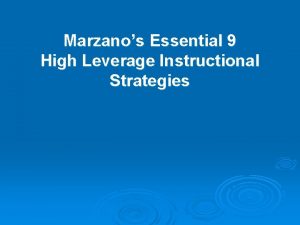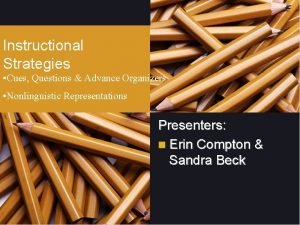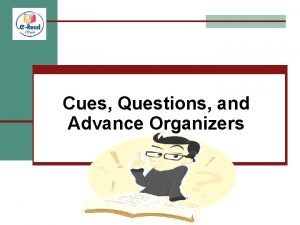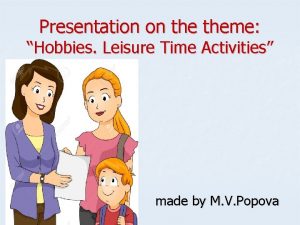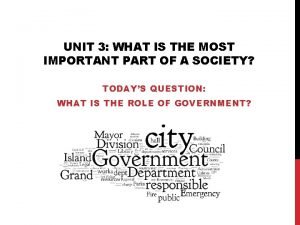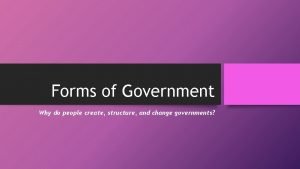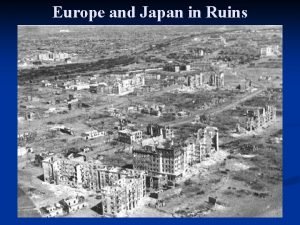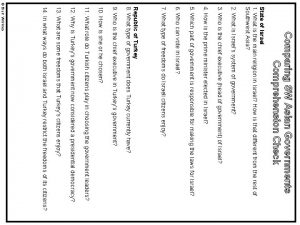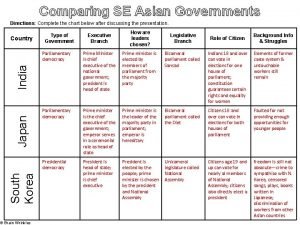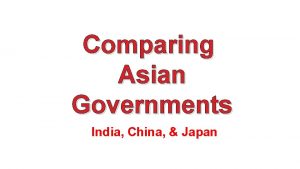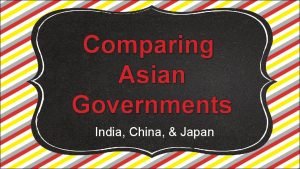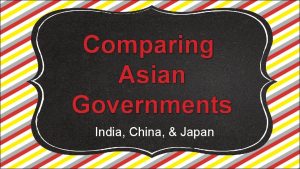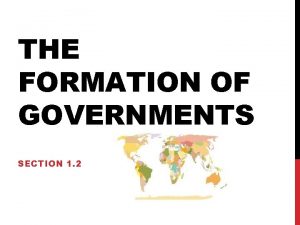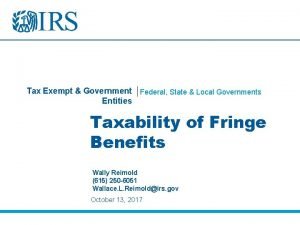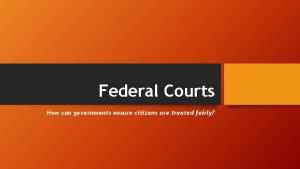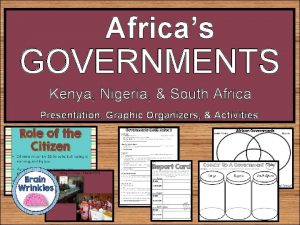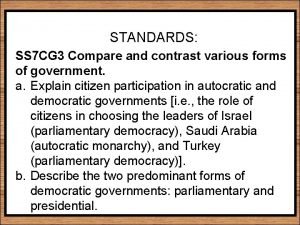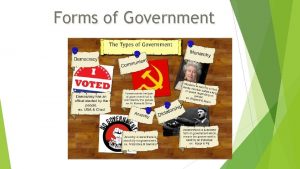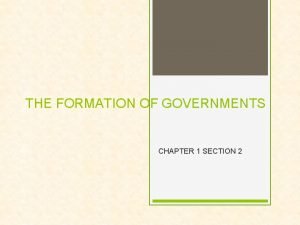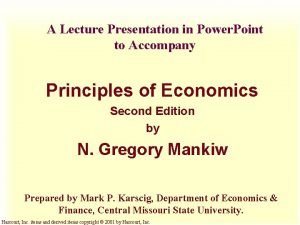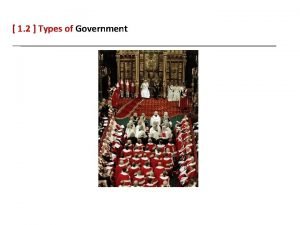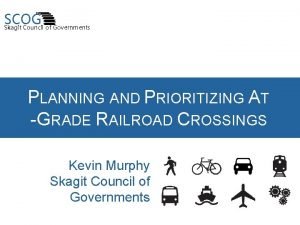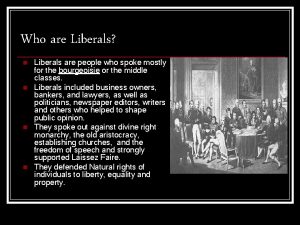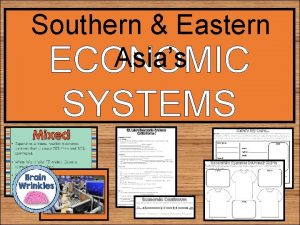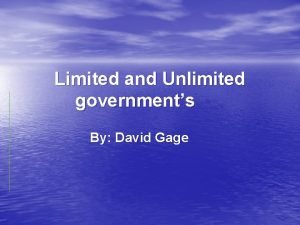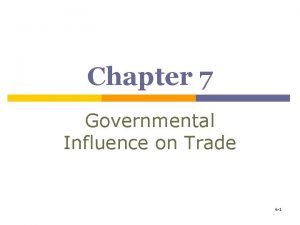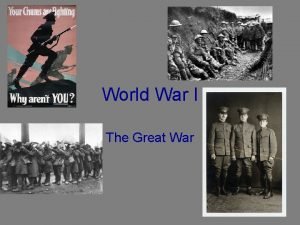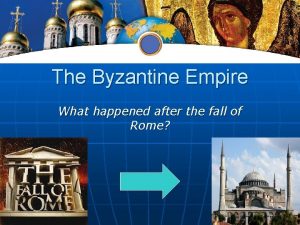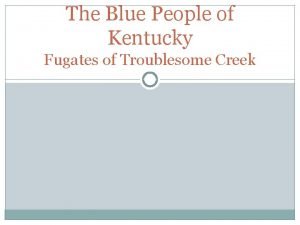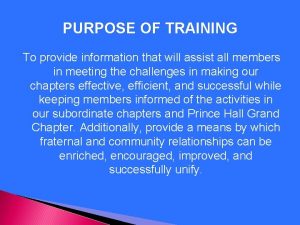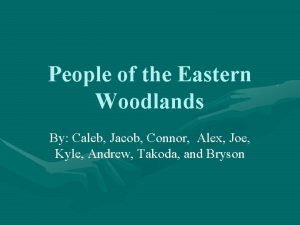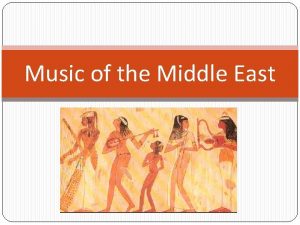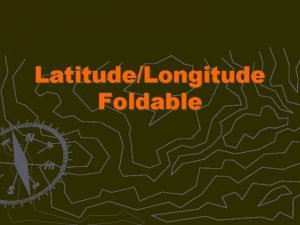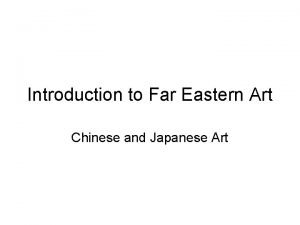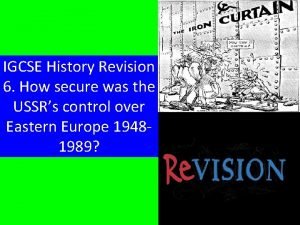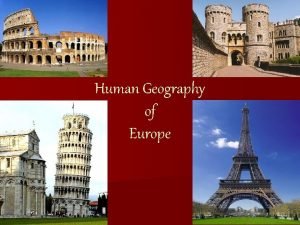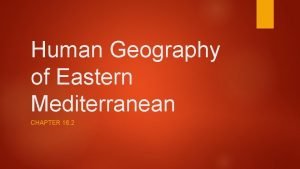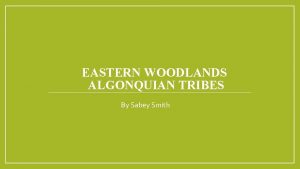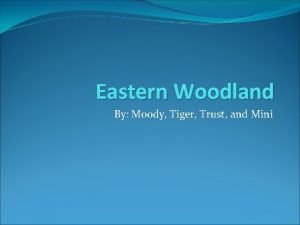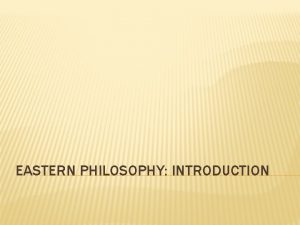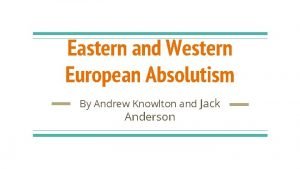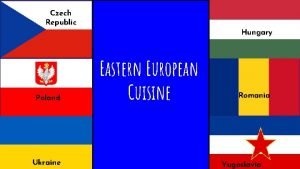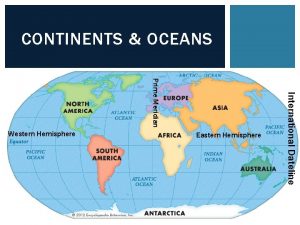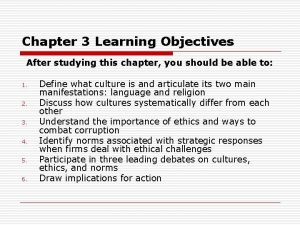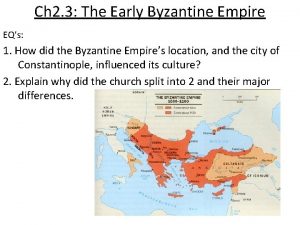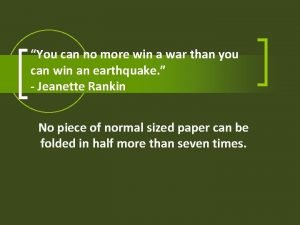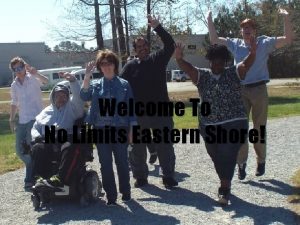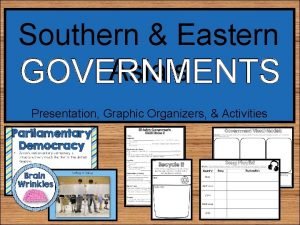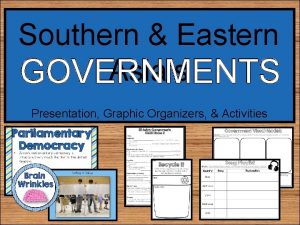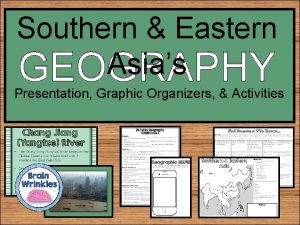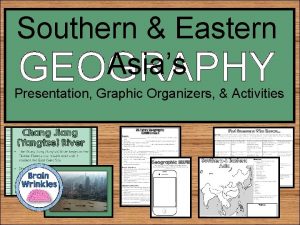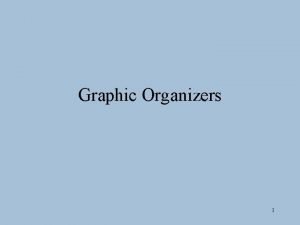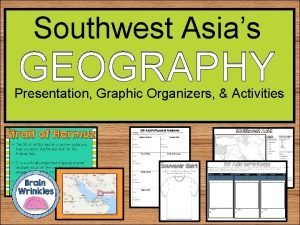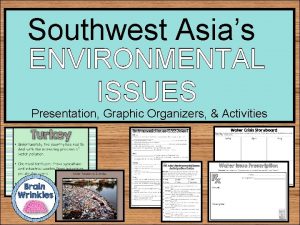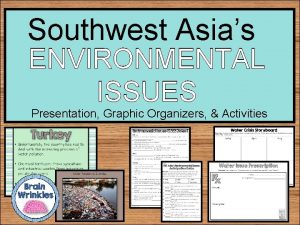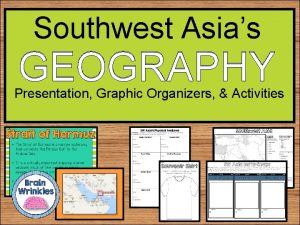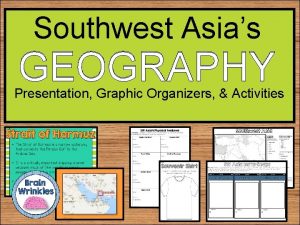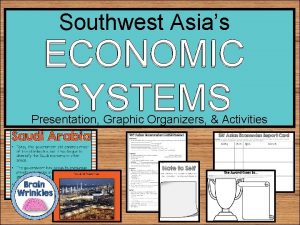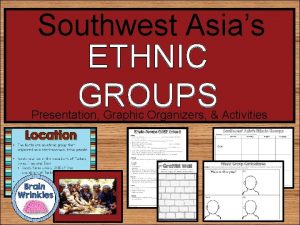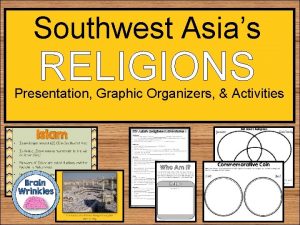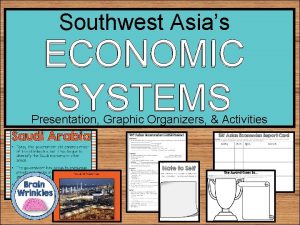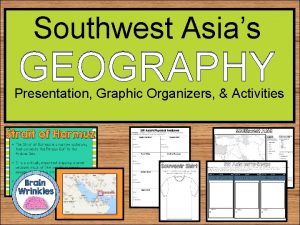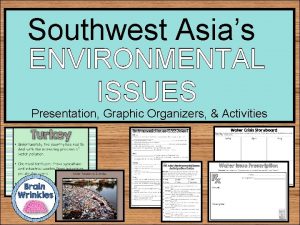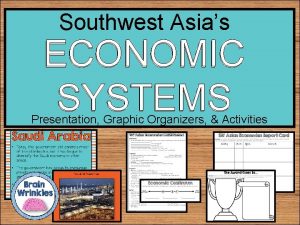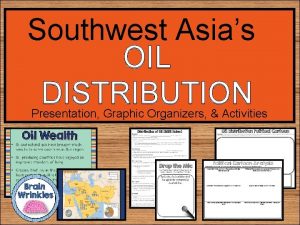Southern Eastern Asias GOVERNMENTS Presentation Graphic Organizers Activities




























































































- Slides: 92

Southern & Eastern Asia’s GOVERNMENTS Presentation, Graphic Organizers, & Activities

STANDARDS: SS 7 CG 4 Compare and contrast various forms of government. a. Explain the role of citizen participation in autocratic and democratic governments [i. e. explain the role of citizens in choosing the leaders of China (communist state), Japan (parliamentary democracy), North Korea (autocracy), South Korea (presidential democracy), and India (parliamentary democracy)]. b. Describe the two predominant forms of democratic governments: parliamentary and presidential. © Brain Wrinkles

Weekly Agenda: 3 -8 to 3 -12 -21 Weekly Opening: • Journal Writing • Citizenship Word of the Week: Leadership • Current Events • Government Visual Models Activity Weekly Work Period: • SE Asia’s Map Skills Review (Countries and Physical Features) (ongoing review of map skills) • SE Asia’s Government Cloze Notes Students will use the student’s Power. Point to complete cloze notes independently.

Weekly Agenda: 3 -8 to 3 -12 -21 Weekly Work Period cont’: • Comparing SE Asia’s Government Chart Activity Students will use guided notes to complete the chart. Once finished, we will check answers as a class. If time permits, students will color their pictures. • SE Asia’s Song Playlist Activity The students will create a song playlist for Southern and Eastern Asian governments that we have discussed. They will choose one song to represent each country, and then will write an explanation of how the song relates to the country’s government.

Weekly Agenda: 3 -8 to 3 -12 -21 Weekly Closing: • SE Asia’s Government Comprehension Check Students will complete the assignment after discussing the presentation. This will count as a quiz! • SE Asia Ticket Out The Door “Recycle It” Activity Students will connect today’s lesson with something that they’ve previously learned. They will explain how the “recycled material” relates to the new concepts from today’s lesson.

Weekly Assessment/Technology Tools: 3 -8 to 3 -12 -21 • SE Asia’s Geography/Environmental Issues Test • SE Asia’s Government Comprehension Check • SE Asia’s Clean It Up Activity • USA Testprep (graded assignment; class time is given but can be completed at home) • Edpuzzle Videos (graded assignment; class time is given but can be completed at home) • Discovery Education (graded assignment; class time is given but can be completed at home)

Journal Topics: 3 -8 -21 3 -9 -21 3 -10 -21 3 -11 -21 3 -12 -21 Qualities of a Good Leader Why You…Chosen Leader Current Event Wednesday/CNN 10 TMS Leader of the Year Student Holiday

Journal Topic: 3 -8 -21 Qualities of a Good Leader Some say good leaders are born and others say good leaders are made. Name and discuss three qualities you think all good leaders should possess. Explain. (5 or more sentences)

Citizenship: 3 -8 -21: Leadership is defined as the ability to take on every task with a sense of purpose and caring for those around them. Talk about a time when someone was given the opportunity to lead, but fail. https: //www. youtube. com/watch? v=Lh 38 IEm_Z 1 M

Journal Topic: 3 -9 -21 Why You…Chosen Leader Why you! Talk about a time when you were chosen to be the leader. Why do you think you were chosen? Were there others who were more capable of leading? Explain. (5 or more sentences)

Citizenship: 3 -9 -21: Leadership is defined as the ability to take on every task with a sense of purpose and caring for those around them. Do you think you can be a good leader, but not yet care about those around you? https: //www. youtube. com/watch? v=Znj. Jpa 1 LBOY

Current Event Wednesday: 3 -10 -21 CNN 10 Three students will be randomly chosen to share out articles. Students who refuse to share out will lose points. (Each student must do one article per week and will receive a current event grade. ) https: //www. cnn. com/cnn 10

Journal Topic: 3 -11 -21 TMS Leader of the Year If you were to choose one student that exhibits great leadership skills to be named TMS Leader of the Year, who would it be and why? (5 or more sentences)

Citizenship: 3 -11 -21: Leadership is defined as the ability to take on every task with a sense of purpose and caring for those around them. Discuss a time when you notice something didn’t work because there was a lack of leadership. https: //www. youtube. com/watch? v=9 MO 1 a. Y 1 x. C 80

Journal Topic: 3 -12 -21 Do the Thing "You must do the thing you think you cannot do. " Think about a time when you did something you thought you could not do. (5 or more sentences)

SE Asia’s Governments CLOZE Notes 1 Let’s Review • How do ____________ in government? • AUTOCRACY: citizens have a ____________ in government; one person has all of the power • DEMOCRACY: supreme power is vested in the people & exercised by them directly or indirectly through a system of representation involving ____________ Governments • Southern and Eastern Asia has a number of ____________ , as well as several autocratic governments. • In the autocracies, the Communist states identify as republics, but give autocratic power to the ____________. • For example, China and North Korea are both autocratic governments where state control is high and citizens’ ____________. Let’s Review • What are the ____________ of democratic governments? • PARLIAMENTARY: citizens elect members of Parliament, and then the ____________ the leader. • The leader works with or ____________. • PRESIDENTIAL: system of government in which the leader is constitutionally ____________. • Citizens ____________ , who works separately from legislature. I. DEMOCRACIES INDIA Background • ____________ colonized and ruled India from the 1600 s until the mid 1900 s. • In 1947, India gained its independence from Great Britain and a ____________ was put into place. • Today, there are ____________ of European colonization in India’s government. Leadership • The ____________ is the chief executive of the national government that holds the most political power. • The president is the head of state who performs ____________ duties and holds little political power. © Brain Wrinkles

SE Asia’s Governments CLOZE Notes 2 How Are Leaders Chosen • The prime minister is ____________ in parliament from the majority party. • Citizens elect members of parliament, and then the ____________. • The president is elected by an ____________ consisting of elected members of Parliament and the legislatures of the states. Legislature • India’s ____________ is called the Sansad (parliament). • The ____________ are called the Council of States and the House of the People. • Membership in the Council of States is ____________ in India’s states. • Indians age ____________ elect all but two members of the House of the People; the president appoints the final two members. Parliamentary Democracy • In India’s parliamentary democracy, ____________ to the House of the People. • The members of Parliament then elect a leader ____________ in the Sansad. • The prime minister works with or ____________. Role of Citizens • The Indian Constitution of 1950 ____________ and personal freedoms to Indian citizens. • India’s Constitution also guarantees ____________. • All Indians over the age of 18 are guaranteed the ____________. • Indians also have freedom of speech, ____________ , freedom of assembly, and many other freedoms similar to those in the US and European democracies. • They are also given the ____________ their language and culture. Struggles • In India, there are some ____________ that arise from traditional practices. • Elements of India’s ____________ still remain in some parts of the country, and the way of life for “untouchable” workers is still very difficult. © Brain Wrinkles

SE Asia’s Governments CLOZE Notes 3 JAPAN Leadership • Japan’s ____________ position (head of state) that holds no political power. • The ____________ is the chief executive who holds the most political power. How Leaders Are Chosen • The emperor is a position that is ____________ through family line. • The prime minister the leader of the ____________ in Japan’s parliament (indirectly elected by the Japanese people). Legislature • Japan’s bicameral legislature is called the ____________ (parliament). • The ____________ are called the House of Councillors and the House of Representatives. • Japanese citizens ____________ elect members of both houses. Parliamentary Democracy • Japan’s parliamentary democracy is structured very much like that in the ____________. • Japanese citizens elect ____________. • Several political parties are represented in parliament, and the ____________ becomes the prime minister. Role of Citizens • In Japan, citizens age 18 and older can ____________. • Japan’s constitution of 1947 established rights and ____________ for Japan’s citizens, including freedom of speech and religion, equal ____________ , and equal education for all. Struggles • Even though Japan’s government has come a long way, it is still sometimes faulted for not providing ____________ for young people. © Brain Wrinkles

SE Asia’s Governments CLOZE Notes 4 SOUTH KOREA Background • In the early 1900 s, the Republic of Korea was a ____________. • The country has come a long way and is now a presidential democracy that supports individual ____________. Legislature • South Korea’s unicameral legislature is called the ____________. • About one-sixth of the legislature is chosen to represent national interests ____________. • The rest of the members are elected by South Koreans ages ____________. Presidential Democracy • South Korea has a ____________. • Citizens directly ____________. • The executive branch ____________ of the legislative branch. Leadership • South Koreans directly elect a president to serve as ____________. • The president then ____________ (subject to confirmation by the National Assembly) to be the chief executive of government. Role of Citizens • Citizens age 19 and older are ____________ or run for office. • South Koreans have a lot ____________ over the government today than they did a couple decades ago. • South Korea’s constitution ____________ of speech, religion, the press, assembly, etc. Struggles • Unfortunately, freedoms for South Korea’s citizens are ____________. • The government considers it a crime to express ____________. • The ____________ songs, books, and plays that are written in Japanese. • Also, workers from other Asian countries ____________ in South Korea. © Brain Wrinkles

SE Asia’s Governments CLOZE Notes 5 II. AUTOCRACIES Autocracy • Autocratic governments rule in ____________. • Government officials make decisions ____________ from citizens. • The people ____________ of changing the government through elections. • Citizens’ rights, such as free speech and right to assemble, are ____________. NORTH KOREA Background • North Korea has a centralized government that is under the control of the ____________. • All government officials ____________. • Since the country’s creation in 1948, it has been ruled by the ____________. • The exact structure of power is somewhat unclear, but the ____________ holds the most influence. Legislature • Citizens vote for a ____________ , which serves as the legislature. • The Supreme People’s Assembly usually only meets twice a year and it mostly ratifies ____________ by the KWP. Leadership • The military supreme leader is the ____________ of the state. • North Korea also has a ____________ that serves as the head of state. • There is also a ____________ that leads the government and oversees the cabinet. • Both the premier and head of state ____________ with the military supreme commander. How Leaders Are Chosen • The military supreme commander appears to be a ____________ that has been passed down through three generations. • The Supreme People’s Assembly elects the ____________. Autocracy • The Korean Workers’ Party is the center of ____________. • High-ranking KWP officials make decisions ____________ to the citizens. © Brain Wrinkles

SE Asia’s Governments CLOZE Notes 6 Role of Citizens • North Korean citizens can vote ____________. • Only the Korean Workers’ Party can select candidates in this autocracy, so citizens don’t really have much ____________. Struggles • Rights such as freedom of religion, press, assembly, etc. , are ____________ by the government. • North Korea has a ____________ of speech. • There are only 3 TV channels (all government-owned), propaganda is announced from loudspeakers every morning, and there is ____________. • There is an ____________ between the rich and poor in North Korea. • More than half of the population are malnourished and ____________. • In the 1990 s, a ____________ struck and killed hundreds of thousands of people. CHINA Leadership • China has a president, who serves as the head of state. • This is largely a ceremonial office that holds ____________. • The ____________ and is the highest ranking administrative official in China’s government. How Leaders Are Chosen • China’s legislature ____________. • The ____________ someone to be the premier, and the legislature confirms him or her. Legislature • The ____________ is the country’s unicameral legislature. • Citizens ____________ can vote in elections; however, only members of the Chinese Communist Party can be candidates in this Communist state. • Candidates are selected and approved by the government ____________ for them. • The National People’s Congress only meets for two weeks a year and mostly just by the Communist Party. © Brain Wrinkles ____________

SE Asia’s Governments CLOZE Notes 7 Role of Citizens • At this time, it is ____________ for Chinese citizens to change their government through elections. • Even though the constitution gives every person over 18 the right to vote, these rights are mostly meaningless because they are only allowed to vote for ________________________. • The government chooses the candidates and then ____________ once they are “elected”. • China’s communist government has a history of ____________ of Chinese citizens by denying them basic rights such as freedom of speech and religion. © Brain Wrinkles

Southern & Eastern Asia’s GOVERNMENTS © Brain Wrinkles

Let’s Review • How do citizens participate in government? • AUTOCRACY: citizens have a very limited role in government; one person has all of the power • DEMOCRACY: supreme power is vested in the people & exercised by them directly or indirectly through a system of representation involving free elections © Brain Wrinkles

Governments • Southern and Eastern Asia has a number of democratic governments, as well as several autocratic governments. • In the autocracies, the Communist states identify as republics, but give autocratic power to the Communist Party. • For example, China and North Korea are both autocratic governments where state control is high and citizens’ rights are limited. © Brain Wrinkles

Let’s Review • What are the two types of democratic governments? • PARLIAMENTARY: citizens elect members of Parliament, and then the members select the leader. • The leader works with or through the legislature. • PRESIDENTIAL: system of government in which the leader is constitutionally independent of the legislature. • Citizens directly elect leader, who works separately from legislature. © Brain Wrinkles

DEMOCRACIES: India, Japan, & South Korea © Brain Wrinkles

INDIA Parliamentary Democracy © Brain Wrinkles

Background • Great Britain colonized and ruled India from the 1600 s until the mid-1900 s. • In 1947, India gained its independence from Great Britain and a parliamentary democracy was put into place. • Today, there are still influences of European colonization in India’s government. © Brain Wrinkles

Leadership • The prime minister is the chief executive of the national government that holds the most political power. • The president is the head of state who performs mostly ceremonial duties and holds little political power. © Brain Wrinkles

Narendra Modi © Brain Wrinkles India’s Prime Minister

Pranab Mukherjee © Brain Wrinkles India’s Prime Minister

How Leaders Are Chosen • The prime minister is elected by members in parliament from the majority party. • Citizens elect members of parliament, and then the members vote for prime minister. • The president is elected by an electoral college consisting of elected members of Parliament and the legislatures of the states. © Brain Wrinkles

Legislature • India’s bicameral legislature is called the Sansad (parliament). • The two houses are called the Council of States and the House of the People. • Membership in the Council of States is chosen by assemblies in India’s states. • Indians age 18 and older elect all but two members of the House of the People; the president appoints the final two members. © Brain Wrinkles

Sansad Bhavan – India’s Parliament Building © Brain Wrinkles

Inside the House of the People © Brain Wrinkles

Parliamentary Democracy • In India’s parliamentary democracy, citizens elect members to the House of the People. • The members of Parliament then elect a leader from the majority party in the Sansad. • The prime minister works with or through the legislature. © Brain Wrinkles

Role of Citizens • The Indian Constitution of 1950 granted many rights and personal freedoms to Indian citizens. • India’s Constitution also guarantees equality for women. • All Indians over the age of 18 are guaranteed the right to vote. © Brain Wrinkles

Role of Citizens • Indians also have freedom of speech, freedom of religion, freedom of assembly, and many other freedoms similar to those in the US and European democracies. • They are also given the right to conserve their language and culture. © Brain Wrinkles

Voting Lines in Delhi © Brain Wrinkles

Struggles • In India, there are some discrimination complaints that arise from traditional practices. • Elements of India’s former caste system still remain in some parts of the country, and the way of life for “untouchable” workers is still very difficult. © Brain Wrinkles

JAPAN Parliamentary Democracy © Brain Wrinkles

Japan’s Diet Building in Tokyo © Brain Wrinkles

Leadership • Japan’s emperor is ceremonial position (head of state) that holds no political power. • The prime minister is the chief executive who holds the most political power. © Brain Wrinkles

How Leaders Are Chosen • The emperor is a position that is inherited through family line. • The prime minister the leader of the majority party in Japan’s parliament (indirectly elected by the Japanese people). © Brain Wrinkles

Legislature • Japan’s bicameral legislature is called the Diet (parliament). • The two houses are called the House of Councillors and the House of Representatives. • Japanese citizens age 18 and older elect members of both houses. © Brain Wrinkles

© Brain Wrinkles

Parliamentary Democracy • Japan’s parliamentary democracy is structured very much like that in the United Kingdom. • Japanese citizens elect members of parliament. • Several political parties are represented in parliament, and the leader of the majority party becomes the prime minister. © Brain Wrinkles

Role of Citizens • In Japan, citizens age 18 and older can vote in elections. • Japan’s constitution of 1947 established rights and personal freedoms for Japan’s citizens, including freedom of speech and religion, equal rights for women, and equal education for all. © Brain Wrinkles

Voting in Tokyo © Brain Wrinkles

Struggles • Even though Japan’s government has come a long way, it is still sometimes faulted for not providing enough opportunities for young people. © Brain Wrinkles

SOUTH KOREA Presidential Democracy © Brain Wrinkles

Background • In the early 1900 s, the Republic of Korea was a military dictatorship. • The country has come a long way and is now a presidential democracy that supports individual rights and freedoms. © Brain Wrinkles

South Korea’s National Assembly Building © Brain Wrinkles

Legislature • South Korea’s unicameral legislature is called the National Assembly. • About one-sixth of the legislature is chosen to represent national interests without going through an election. • The rest of the members are elected by South Koreans ages 19 and up. © Brain Wrinkles

South Korea’s National Assembly © Brain Wrinkles

Presidential Democracy • South Korea has a presidential democracy. • Citizens directly elect the president. • The executive branch works independently of the legislative branch. © Brain Wrinkles

Leadership • South Koreans directly elect a president to serve as head of state. • The president then appoints a prime minister (subject to confirmation by the National Assembly) to be the chief executive of government. © Brain Wrinkles

Moon Jae-in © Brain Wrinkles South Korea’s President

Lee Nak-yeon © Brain Wrinkles South Korea’s Prime Minister

Role of Citizens • Citizens age 19 and older are free to vote or run for office. • South Koreans have a lot more influence over the government today than they did a couple decades ago. • South Korea’s constitution guarantees basic freedoms of speech, religion, the press, assembly, etc. © Brain Wrinkles

Struggles • Unfortunately, freedoms for South Korea’s citizens are not absolute. • The government considers it a crime to express sympathy with North Korea. • The government also censors songs, books, and plays that are written in Japanese. • Also, workers from other Asian countries face discrimination in South Korea. © Brain Wrinkles

AUTOCRACIES: North Korea and China © Brain Wrinkles

Autocracy • Autocratic governments rule in North Korea and China. • Government officials make decisions without any input from citizens. • The people do not have the option of changing the government through elections. • Citizens’ rights, such as free speech and right to assemble, are restricted by the government. © Brain Wrinkles

NORTH KOREA Autocracy © Brain Wrinkles

Background • North Korea has a centralized government that is under the control of the communist Korean Workers’ Party. • All government officials belong to the KWP. • Since the country’s creation in 1948, it has been ruled by the Kim dynasty. • The exact structure of power is somewhat unclear, but the military supreme commander holds the most influence. © Brain Wrinkles

Supreme People’s Assembly © Brain Wrinkles

Legislature • Citizens vote for a Supreme People’s Assembly, which serves as the legislature. • The Supreme People’s Assembly usually only meets twice a year and it mostly ratifies decisions already made by the KWP. © Brain Wrinkles

Supreme People’s Assembly © Brain Wrinkles

Leadership • The military supreme leader is the highest office of the state. • North Korea also has a chief of state that serves as the head of state. • There is also a premier that leads the government and oversees the cabinet. • Both the premier and head of state must share power with the military supreme commander. © Brain Wrinkles

Kim Jong-un North Korean Leader © Brain Wrinkles

How Leaders Are Chosen • The military supreme commander appears to be a hereditary position that has been passed down through three generations. • The Supreme People’s Assembly elects the chief of state and the premier. © Brain Wrinkles

Autocracy • The Korean Workers’ Party is the center of North Korea’s government. • High-ranking KWP officials make decisions without answering to the citizens. © Brain Wrinkles

© Brain Wrinkles

Role of Citizens • North Korean citizens can vote starting at age 17. • Only the Korean Workers’ Party can select candidates in this autocracy, so citizens don’t really have much influence on the government. © Brain Wrinkles

Struggles • Rights such as freedom of religion, press, assembly, etc. , are heavily restricted by the government. • North Korea has a serious lack of freedom of speech. • There are only 3 TV channels (all government-owned), propaganda is announced from loudspeakers every morning, and there is no internet. © Brain Wrinkles

© Brain Wrinkles

Struggles • There is an extreme gap between the rich and poor in North Korea. • More than half of the population are malnourished and live in extreme poverty. • In the 1990 s, a huge famine struck and killed hundreds of thousands of people. © Brain Wrinkles

© Brain Wrinkles

CHINA Communist State © Brain Wrinkles

Great Hall of the People in Beijing © Brain Wrinkles

Leadership • China has a president, who serves as the head of state. This is largely a ceremonial office that holds little political power. • The premier is the chief executive and is the highest ranking administrative official in China’s government. © Brain Wrinkles

Xi Jinping © Brain Wrinkles China’s President

Li Keqiang © Brain Wrinkles China’s Premier

How Leaders Are Chosen • China’s legislature elects the president. • The president nominates someone to be the premier, and the legislature confirms him or her. © Brain Wrinkles

Legislature • The National People’s Congress is the country’s unicameral legislature. • Citizens 18 and over can vote in elections; however, only members of the Chinese Communist Party can be candidates in this Communist state. • Candidates are selected and approved by the government before the people can vote for them. © Brain Wrinkles

Great Hall of the People (National People’s Congress Resides Here) © Brain Wrinkles

Legislature • The National People’s Congress only meets for two weeks a year and mostly just approves decisions already made by the Communist Party. © Brain Wrinkles

Role of Citizens • At this time, it is not possible for Chinese citizens to change their government through elections. • Even though the constitution gives every person over 18 the right to vote, these rights are mostly meaningless because they are only allowed to vote for members of the Chinese Communist Party. • The government chooses the candidates and then dictates what they do once they are © Brain Wrinkles

Voting in China* *Chinese Communist Party is the only legal party, and officially sanctioned candidates run unopposed. © Brain Wrinkles

Role of Citizens • China’s communist government has a history of violating the personal freedoms of Chinese citizens by denying them basic rights such as freedom of speech and religion. © Brain Wrinkles

Thank You! Thank you so much for downloading this file. I sincerely hope you find it helpful and that your students learn a lot from it! I look forward to reading your feedback in my store. If you like this file, you might want to check out some of my other products that teach social studies topics in creative, engaging, and hands-on ways. Best wishes, Ansley at Brain Wrinkles
 What is asias largest desert
What is asias largest desert Tea supplemental aids
Tea supplemental aids Grammar and mechanics rules supplemental aid
Grammar and mechanics rules supplemental aid Tea blank graphic organizers
Tea blank graphic organizers Hierarchical graphic organizer
Hierarchical graphic organizer Human read aloud mcas
Human read aloud mcas Nonlinguistic representations examples in the classroom
Nonlinguistic representations examples in the classroom Blank graphic organizers for math staar
Blank graphic organizers for math staar Marzano graphic organizers
Marzano graphic organizers Mcas graphic organizers
Mcas graphic organizers Southern and eastern asia map
Southern and eastern asia map Se asia geography cloze notes 1 answer key
Se asia geography cloze notes 1 answer key Southern and eastern asia physical features answer key
Southern and eastern asia physical features answer key Southern & eastern asia physical features map
Southern & eastern asia physical features map Brain wrinkles southern and eastern asia
Brain wrinkles southern and eastern asia Brain wrinkles southern and eastern asia
Brain wrinkles southern and eastern asia Se asia's belief systems cloze notes
Se asia's belief systems cloze notes Physical features of southern and eastern asia
Physical features of southern and eastern asia Southern and eastern asia physical features answer key
Southern and eastern asia physical features answer key Graphic weight meaning
Graphic weight meaning Ghost graphic story graphic and wayfinding
Ghost graphic story graphic and wayfinding Cues questions and advance organizers
Cues questions and advance organizers Advance organizer
Advance organizer Expository advance organizers examples
Expository advance organizers examples Dear organizers
Dear organizers Register and signaling vocabulary
Register and signaling vocabulary Marzano's 9 high yield strategies
Marzano's 9 high yield strategies Cues questions and advance organizers
Cues questions and advance organizers Skimming advance graphic organizer
Skimming advance graphic organizer The statement of cash flows helps users
The statement of cash flows helps users It is a popular indoor and outdoor sport
It is a popular indoor and outdoor sport Primary and support activities
Primary and support activities Tertiary activities definition
Tertiary activities definition Free time activities presentation
Free time activities presentation Different kind of governments
Different kind of governments Why do people create structure and change governments
Why do people create structure and change governments What are three political problems postwar governments faced
What are three political problems postwar governments faced Governments comprehension check
Governments comprehension check Comparing sw asia governments answers
Comparing sw asia governments answers Comparing asian governments
Comparing asian governments Comparing asian governments
Comparing asian governments Comparing asian governments
Comparing asian governments Centre region council of governments
Centre region council of governments Comparing african governments
Comparing african governments The formation of governments 1-2
The formation of governments 1-2 Are local governments tax exempt
Are local governments tax exempt Are city governments tax exempt
Are city governments tax exempt Comparing sw asia governments answers
Comparing sw asia governments answers How can governments ensure citizens are treated fairly
How can governments ensure citizens are treated fairly How do the governments of kenya and nigeria compare?
How do the governments of kenya and nigeria compare? Comparing sw asian governments
Comparing sw asian governments How are governments classified
How are governments classified The formation of governments 1-2
The formation of governments 1-2 Government can sometimes improve market outcomes
Government can sometimes improve market outcomes What are the three ways to classify governments
What are the three ways to classify governments Scog
Scog Liberals wanted governments to be based on
Liberals wanted governments to be based on Economic systems chart
Economic systems chart Is canada limited or unlimited government
Is canada limited or unlimited government Why do governments intervene in international trade
Why do governments intervene in international trade Sinciput presentation
Sinciput presentation Fundal height transverse lie
Fundal height transverse lie Wwi eastern front
Wwi eastern front Freemasony
Freemasony Webdhis gauteng
Webdhis gauteng Eastern woodlands landforms
Eastern woodlands landforms What happened after rome fell
What happened after rome fell The blue people of troublesome creek
The blue people of troublesome creek Electa oes star point
Electa oes star point Pompey's eastern settlement
Pompey's eastern settlement Eastern woodlands clothes
Eastern woodlands clothes Aerophone
Aerophone Western vs eastern hemisphere
Western vs eastern hemisphere Central eastern italy
Central eastern italy Far eastern art
Far eastern art Ussr control over eastern europe igcse
Ussr control over eastern europe igcse What is considered eastern europe
What is considered eastern europe Chapter 16 eastern mediterranean answers
Chapter 16 eastern mediterranean answers Honor flight oregon
Honor flight oregon Sabey eastern washington
Sabey eastern washington Moody tiger
Moody tiger Eastern philosophy
Eastern philosophy Eastern kentucky flights
Eastern kentucky flights Differences between eastern and western absolutism
Differences between eastern and western absolutism Eastern european cuisine history
Eastern european cuisine history Secneer
Secneer Oceans in the eastern hemisphere
Oceans in the eastern hemisphere Western values vs eastern values
Western values vs eastern values How do mountains and plains define eastern europe?
How do mountains and plains define eastern europe? Roman catholic vs eastern orthodox
Roman catholic vs eastern orthodox Martin fugate
Martin fugate Stalingrad war
Stalingrad war No limits eastern shore
No limits eastern shore

